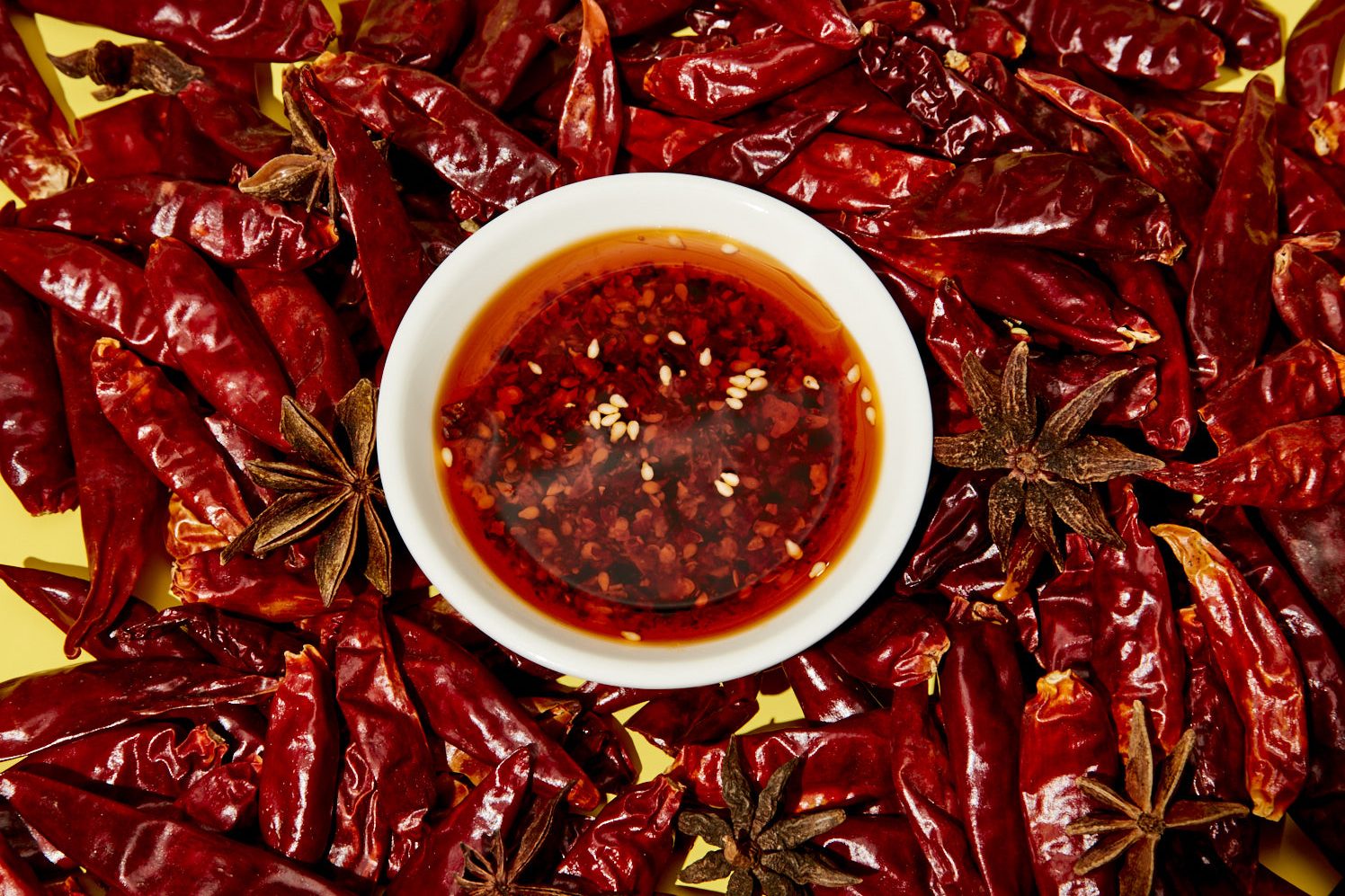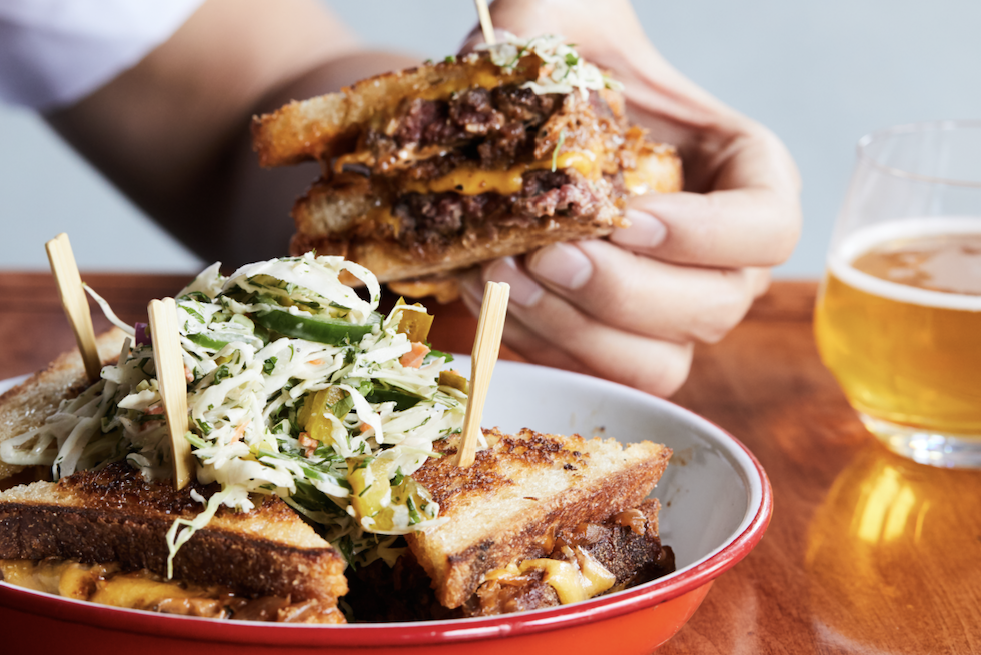In the long, long list of food we’ve craved over the past 12 months, Brandon Jew’s entire Michelin-starred menu has remained stubbornly front of mind. Now, thanks to the release of his new cookbook — Mister Jiu’s in Chinatown: Recipes and Stories from the Birthplace of Chinese American Food — there’s the slight (extremely slight but definitely non-zero) chance that we’ll be able to replicate at least parts of it at home.
Here, Jew shares his recipe for seafood shui jiao, his exceptional dumplings. Obviously, we went straight to the source for tips on how not to screw this up.
“When making dumplings, test one before making a whole batch,” Jew says. “A double check to ensure you are happy with the results is useful in thinking through the rest of the dish.” Another advisory for the fast-moving home chef: “The other tip I’d say is to really ensure you have sealed the dumplings well. The crimping of the dumplings are both beautiful and functional, so spend some extra time on each one to make sure they are sealed tight.”
As valuable as it is for home cooks, Jew’s book offers more than recipes, with a celebration of the rich, diverse, culinarily ambitious Chinese-American community in San Francisco. “I have received so much inspiration from our Chinatown here in San Francisco,” he says. “The streets here still contain visual history — the signs, the architecture, the legacy businesses, etc. — and are a reminder to me of what this community has had to endure and what it has already accomplished. As the birthplace of Chinese-American food, this is where chefs first showed the possibility of dishes being created with American palates in mind and with American ingredients. It was those dishes that bridged other communities to learn more about Chinese cuisine and Chinese people.”

You heard it: Eating these dumplings isn’t just a joy unto itself, but a civic duty and moral obligation. Get going.
Mister Jiu’s Seafood Dumplings
Plan ahead: You’ll need time to make Basic Chile Oil and Lanzhou Chile Oil. You can make the wrappers ahead of time and freeze. Makes about 36 shui jiao; 6 to 8 servings
For the shui jiao wrappers:
- 2¾ cups plus 3 Tbsp all-purpose flour
- 1 Tbsp finely chopped dill fronds
- 1½ tsp kosher salt
- ¾ cup plus 2 Tbsp hot water, just boiled, plus more as needed
For the seafood filling:
- 1 tsp neutral oil
- 4 cups cored and finely shredded Savoy cabbage
- 12 oz boneless, skinless rock cod or other lean white fish fillets, cut into 2-inch pieces
- 6 oz cleaned and peeled shrimp
- 4 oz sea scallops
- 3 Tbsp wheat starch (look for “澄麵粉” [chìhng mihn fán] or sometimes “wheaten cornflour” or “non-glutinous flour”)
- 1½ Tbsp cornstarch
- ⅓ cup finely chopped chives
- 1½ Tbsp kosher salt
- ½ cup Chinese black vinegar
- ½ cup Basic Chile Oil
- ½ cup Lanzhou Chile Oil
- ⅓ cup light soy sauce (生抽, sāng chāu)
- 2 Tbsp plus 1 tsp toasted sesame oil
- Dill fronds for garnishing
To make the wrappers: In the bowl of a stand mixer fitted with the dough hook attachment, combine the flour, dill fronds and salt. With the mixer on low speed, slowly pour in the hot water and mix until a dough forms a fairly smooth ball around the hook, about 10 minutes. If the flour is not completely incorporated after 2 minutes, add more water, 1 tsp at a time, until all the flour is moistened. If mixing by hand, in a bowl, mix together the flour, dill and salt and then, with a pair of chopsticks, stir in the hot water a little at a time until the flour is damp enough that it begins binding together. Knead the dough for a couple minutes in the bowl until smooth and combined.
Form the dough into a smooth ball and let rest in the bowl, covered with a damp kitchen towel, for 30 minutes. The dough should now look perfectly smooth, feel soft, and slowly spring back when you press it. Divide the dough into six pieces of roughly the same size. If using a pasta roller, roll one piece at a time (keep the rest covered), starting at the thickest setting and moving down incrementally until slightly more than 1/16 inch thick (setting 4 on a KitchenAid pasta roller), doing your best to roll out a wide sheet. Roll the dough through twice on this final setting. If rolling by hand, lightly flour a rolling pin and roll each piece out to 1/16 inch thick.
Using a 3½-inch round cutter, cut out circles of dough, layering the rounds between sheets of parchment paper and covering the top layer with a damp kitchen towel. Gather up the dough scraps, re-roll and cut until you have about 36 wrappers. Leave covered with a damp kitchen towel and refrigerate until ready to use, up to 1 day. To make the filling: Warm a wok or large frying pan over medium heat. Add the neutral oil and let it heat up a few seconds. Add the cabbage and cook until completely tender, about 10 minutes. Transfer the cabbage to a bowl and put in the refrigerator until chilled, about 30 minutes.
Meanwhile, using a meat grinder, pass the fish, shrimp, and scallops through a coarse grinding plate (¼-inch / 6mm holes) into a medium bowl. Or hand chop each component with a cleaver until a rough dice, then combine and continue to chop until an even, fine mince. Transfer to a bowl and put in the refrigerator.
When the cabbage is cool, use your hands to squeeze as much moisture from it as possible and add to the bowl of seafood. Add the wheat starch, cornstarch, chives and salt and vigorously mix with a wooden spoon until a sticky paste forms.
Line a rimmed baking sheet with parchment paper. Uncover six of the wrappers at a time (keep the rest under a damp kitchen towel while working). Spoon 1 tbsp filling in the center of a wrapper and flatten a bit. Fold the wrapper in half by bringing the bottom up to the top, then pinch the edges together to seal. Starting at one end, make about six pleats along the sealed edge. Hold the shui jiao by the pleats and gently plop it down on the baking sheet to form a flat bottom. Repeat until all the filling is used up. If at any point the wrappers start to dry out and stop sealing when pinched together, trace the edges of the wrapper with a water-dampened finger. (If not cooking right away, refrigerate the shui jiao on the baking sheet, covered with a damp kitchen towel, for up to 1 day. You can also freeze them solid, uncovered on the baking sheet, then transfer to a freezer bag and store in the freezer for up to 2 months. Cook from frozen; do not thaw first.)
In a medium bowl, stir together the vinegar, both chile oils, soy sauce and sesame oil. Set this sauce aside. Bring a large saucepan of heavily salted water (it should remind you of seawater) to a boil over high heat. Add one-third of the shui jiao and boil until cooked through, 5 minutes if fresh, or 6 minutes if frozen. Using a slotted spoon, transfer the shui jiao to a plate. Repeat with the remaining shui jiao. Spoon a generous amount of the reserved sauce into individual serving bowls and add five or six shui jiao to each bowl. Garnish with dill fronds and serve immediately.
Basic Chile Oil
You’ll need at least 2 days for infusing the chiles. Makes 1 ¾ cups.
To bring out all these flavors, you have to first heat the oil to smoking; to the edge of catching fire, really. Keep the spices and cold oil nearby, so things don’t get out of hand. Once the oil is made, don’t reheat it. Add a dash to the wok at the very end of cooking or drizzle over a dish at the table.
- One 2½ x ¾-inch strip fresh orange peel
- 2 Tbsp Chinese chile flakes
- 4 tsp red Sichuan peppercorns
- ½ tsp Aleppo chile or ground Korean chile (gochugaru)
- ½ star anise pod
- 2 cups neutral oil
Put the orange peel, chile flakes, peppercorns, Aleppo chile and star anise in a heatproof bowl or 1-quart jar. Fill a small saucepan with 1½ cups of the neutral oil and secure a deep-fry thermometer on the side. Place over medium-high heat and warm the oil to 300°F. Pour the oil over the chile mixture, then immediately top with the remaining ½ cup oil. Let cool, then cover and infuse at cool room temperature for 2 to 3 days.
Strain the chile oil through a fine-mesh strainer into an airtight container and discard the solids. Store in the refrigerator for up to 3 months.
Lanzhou chile oil
You’ll need overnight for steeping. Makes a scant 1 cup.
- 1 cup neutral oil
- ⅛ medium yellow onion, coarsely chopped
- 1 green onion, coarsely chopped
- ½-inch piece fresh ginger, peeled and thinly sliced ½ small cinnamon stick
- 1 black cardamom pod (草果, chóu gwó)
- 1 star anise pod
- ½ tsp fennel seeds
- ½ tsp red Sichuan peppercorns
- ¼ cup Chinese chile flakes
- 1 Tbsp raw white sesame seeds
- 1 Tbsp raw black sesame seeds
- 1 dash dark soy sauce (老抽, lóuh chāu)
Fill a wok or small saucepan with the neutral oil and secure a deep-fry thermometer on the side. Add the yellow onion, green onion, ginger, cinnamon, cardamom, star anise, fennel seeds, and peppercorns. Place the pan over medium heat and warm the oil until it reaches 300° F (no higher, or the oil will taste burnt) and the onions begin to caramelize at the edges, 12 to 14 minutes. Remove from the heat.
Line a fine-mesh strainer with a double layer of cheesecloth and set over a heatproof bowl. Pour the oil mixture through the strainer, then gather up the sides of the cheesecloth and tie closed with kitchen twine to form a sachet. Add the sachet, chile flakes, white and black sesame seeds, and soy sauce to the oil and stir to combine. Let cool to lukewarm, then cover and let sit overnight at room temperature. Remove the sachet and gently squeeze any oil in it back into the bowl. Discard the sachet.Transfer the chile oil to an airtight container and store in the refrigerator for up to 3 months.
This article was featured in the InsideHook SF newsletter. Sign up now for more from the Bay Area.





















